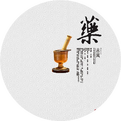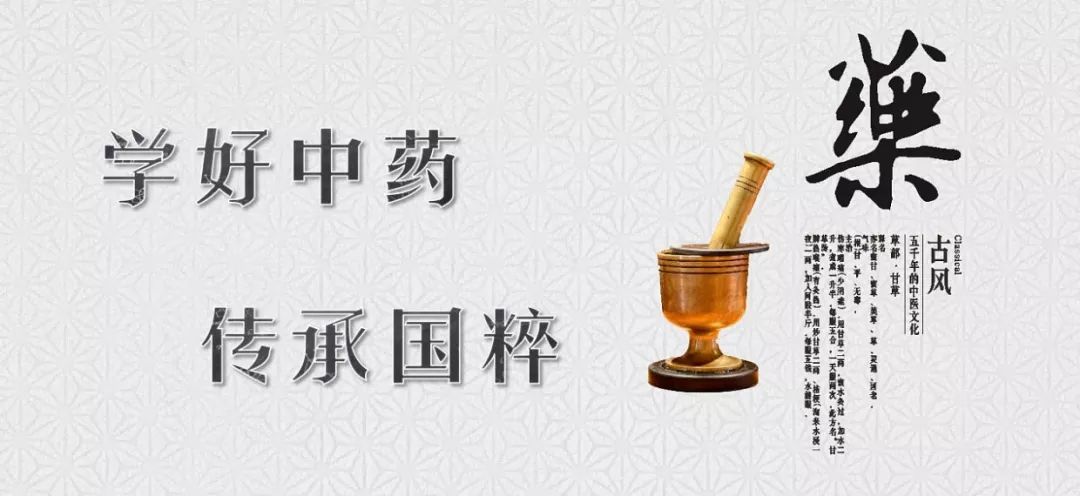

Cang Zhu (Atractylodes lancea) (Thunb.) DC Habitat
Cang Zhu refers to the medicinal material derived from the dried rhizomes of the Asteraceae family plants, specifically Mao Cang Zhu (Atractylodes lancea) (Thunb.) DC. or Bei Cang Zhu (Atractylodes chinensis) (DC.) Koidz.
Cang Zhu is a commonly used medicinal material in clinical practice. It has a pungent and aromatic flavor, and is known for its ability to dry dampness, strengthen the spleen, dispel wind, and scatter cold, making it a key herb for addressing dampness obstructing the spleen. Therefore, many prescriptions during the current pandemic include this herb. (The plant images are all of Bei Cang Zhu.)
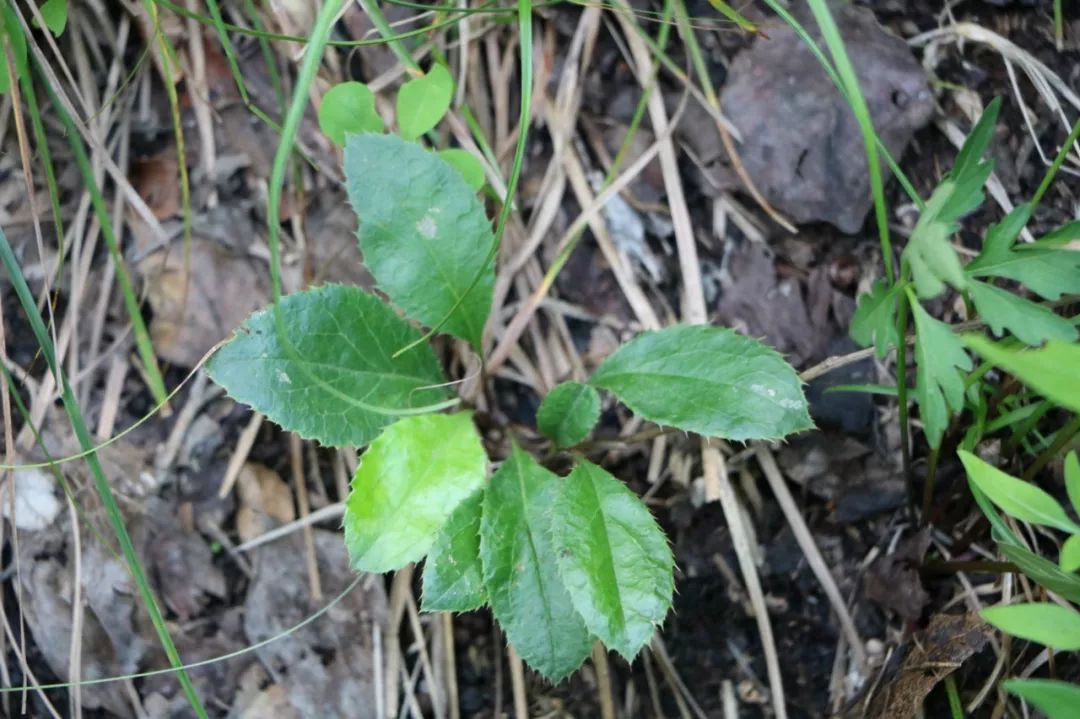
Cang Zhu Seedling Stage
Today, we will delve deeply into Cang Zhu. First, from a botanical perspective, Cang Zhu is a perennial herb belonging to the Asteraceae family and the genus Atractylodes. The classification of this genus has been historically chaotic due to transitional and unstable variations.
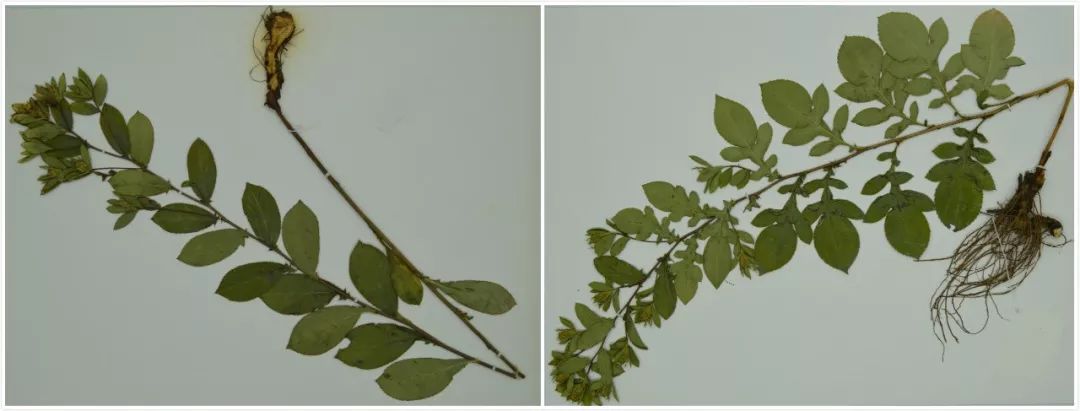
Cang Zhu with Variable Leaf Shapes
In China, there are mainly five species: Cang Zhu, Bai Zhu (Atractylodes macrocephala), Guan Cang Zhu, Chao Xian Cang Zhu, and E Xi Cang Zhu. Among them, the plant catalog merges Bei Cang Zhu into Mao Cang Zhu, combining them into one species, Cang Zhu (Atractylodes lancea) (Thunb.) DC. This is a discrepancy between the Chinese Pharmacopoeia and mainstream plant classification.
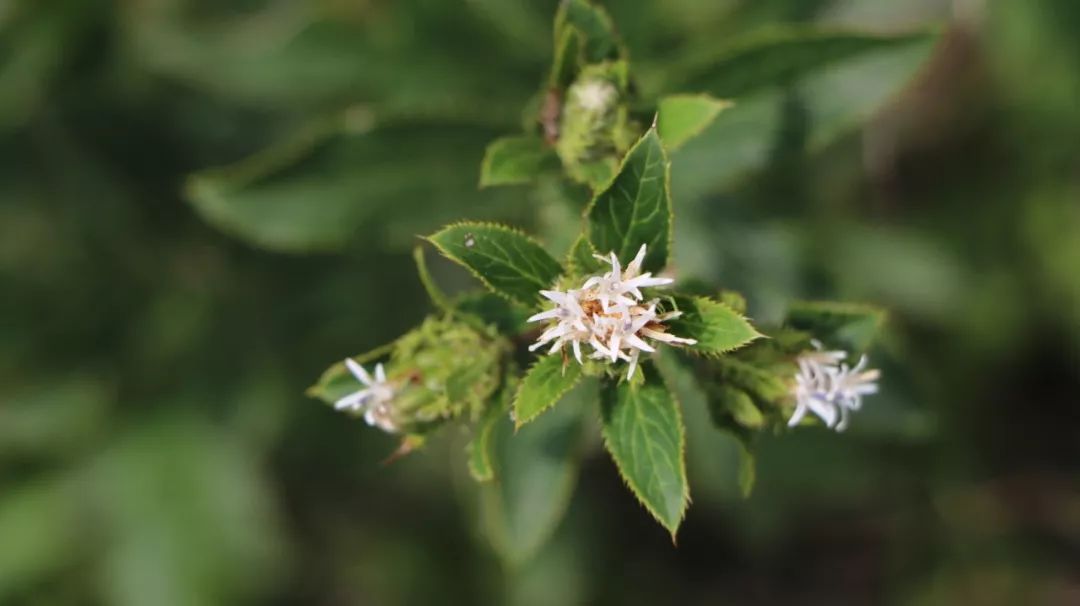
This is the general classification position of Cang Zhu. Now, let’s discuss the history of its medicinal use. In ancient times, Cang Zhu was not known by this name; both Bai Zhu and Cang Zhu were referred to as “Zhu”. The earliest recorded use of “Zhu” in medicine is found in the Fifty-Two Diseases Formulas. Later, in the Liang Dynasty, Tao Hongjing mentioned in the Record of Famous Physicians that “Zhu” can be divided into white (i.e., Bai Zhu) and red (i.e., Cang Zhu), hence Cang Zhu is also known as Chi Zhu.
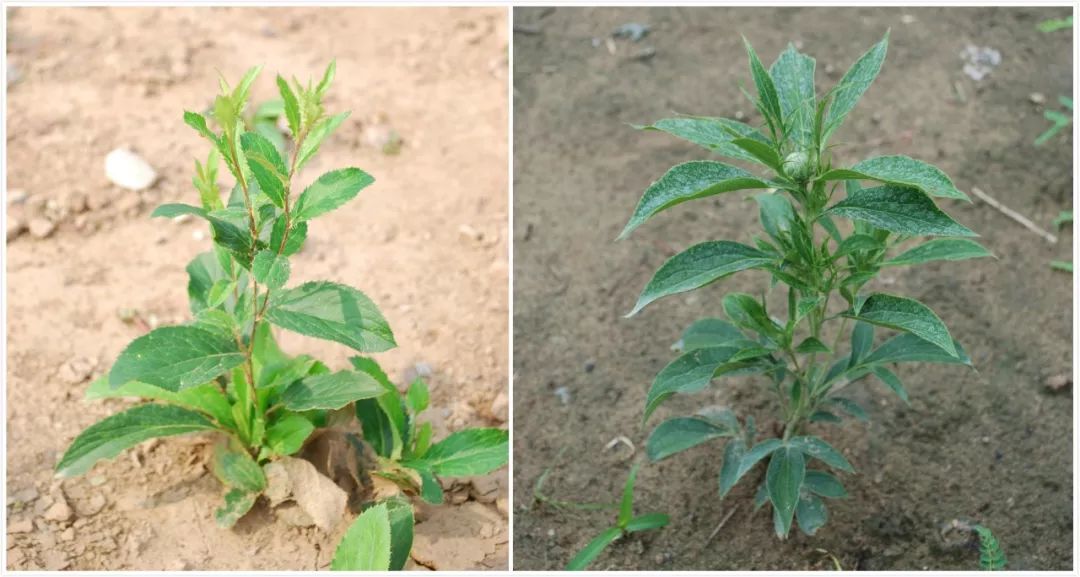
Cang Zhu (left) and Bai Zhu (right) Plant Morphology
Regarding the earliest mention of “Zhu”, historical herbal texts and current research have varied opinions. Before the Tang and Song Dynasties, Bai Zhu and Cang Zhu were often confused, leading to frequent misuses of Bai Zhu and Cang Zhu. It was not until the Northern Song Dynasty that the distinction between Cang Zhu and Bai Zhu began to be emphasized, and subsequently, herbalists began to document them separately, clarifying the medicinal use of Cang Zhu after the Northern Song Dynasty.

Cang Zhu Flowering Process
For the medicinal material of Cang Zhu, although it is classified as one species, Cang Zhu (Atractylodes lancea) (Thunb.) DC, it has traditionally been sourced from two different plant origins: Mao Cang Zhu (Atractylodes lancea) (Thunb.) DC. and Bei Cang Zhu (Atractylodes chinensis) (DC.) Koidz. While they are similar botanically, there are significant differences in their medicinal applications.
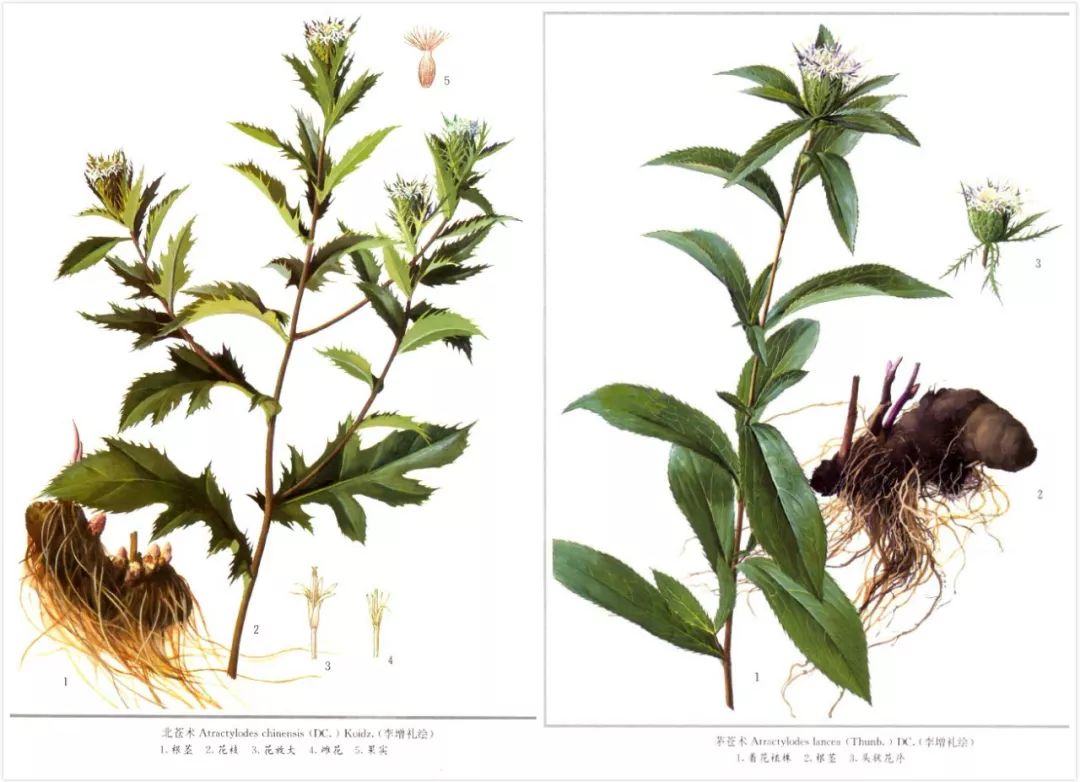
Bei Cang Zhu (left) and Mao Cang Zhu (right) Hand-drawn
Mao Cang Zhu primarily grows in the southern region around Mao Mountain (currently Jurong, Jiangsu), also known as southern Cang Zhu. It is significantly superior in terms of authenticity and quality compared to Bei Cang Zhu, with dense oil chambers in its cross-section and higher volatile oil content, resulting in the formation of fine needle-like crystals, hence it is also called “Mao Cang Zhu”. Its flavor is aromatic, slightly sweet, and then bitter and pungent. It is the highest grade of Cang Zhu medicinal material.
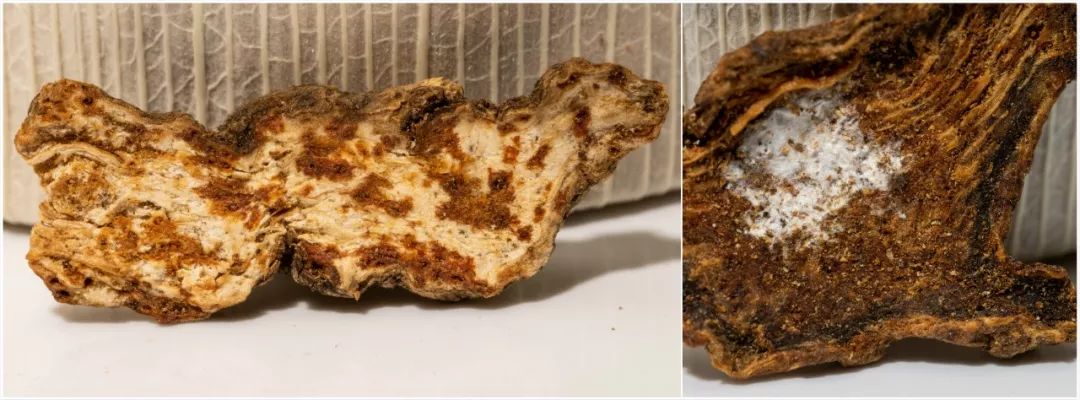
Mao Cang Zhu slices, image from Teacher Wang Zeguang
However, the early destruction of local wild resources of Mao Cang Zhu has led to its gradual extinction, making it difficult to form a market. As a result, corresponding specimens are hard to collect. Not to mention clinical use; it can only quietly lie in the Chinese Pharmacopoeia as a display.

Magnified Crystals of Mao Cang Zhu, image from Teacher Wang Zeguang
It is worth noting that the subspecies of Mao Cang Zhu, Luotian Cang Zhu, has been successfully cultivated and is widely planted in Luotian County and Yingshan County, Hubei Province, with excellent quality. However, the cultivation cost is high, and it is exported at high prices to Japan and South Korea, making it rarely used domestically.
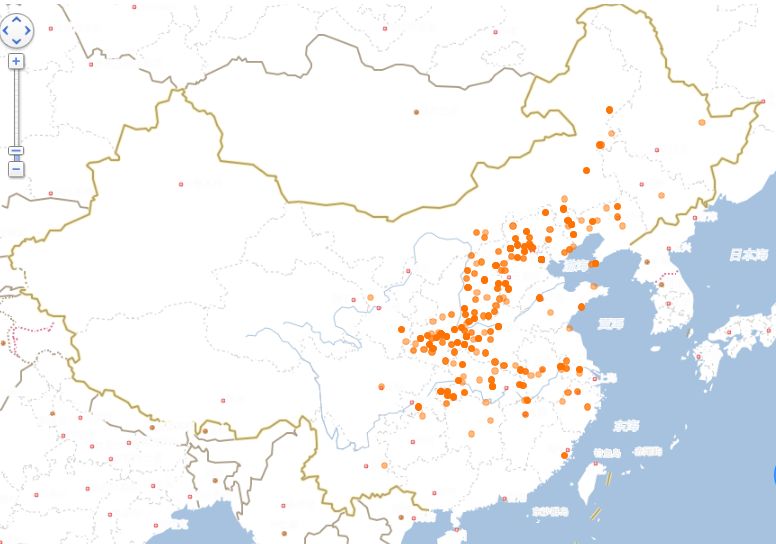
Distribution Map of Cang Zhu
Due to its rarity, compared to Mao Cang Zhu, Bei Cang Zhu is less valuable, but its wild resources are relatively abundant and of good quality. Bei Cang Zhu is mainly distributed in most northern regions of China, with Hebei Chengde and Inner Mongolia being the main production areas, with Chengde being the best. Due to the inability to meet the production capacity of Mao Cang Zhu, Bei Cang Zhu has become the primary source of Cang Zhu medicinal material used today.

Wild Bei Cang Zhu Roots
We know that the cultivation history of Bai Zhu is long, dating back to the Ming and Qing Dynasties, but the cultivation of Cang Zhu has only emerged in recent years. Traditionally, Bei Cang Zhu has been supplied to clinics as a wild product, but all resources have natural limits. As wild Cang Zhu becomes scarcer, the larger and older specimens have been nearly exhausted, leading to a decrease in the size of wild Cang Zhu medicinal materials in recent years. Its price has also been rising.

Wild Bei Cang Zhu Raw Materials and Slices
Driven by profit, in recent years, the cultivation of Bei Cang Zhu has gradually developed. The artificial cultivation of Cang Zhu can be accurately traced back to 2012, when Chengde Jingfukang Pharmaceutical was the first to gradually develop Cang Zhu cultivation with local farmers. Even Heilongjiang in the northeast has begun to introduce cultivation. Unfortunately, due to the abundance of Guan Cang Zhu in the area, many people have incorrectly introduced it without professional guidance.
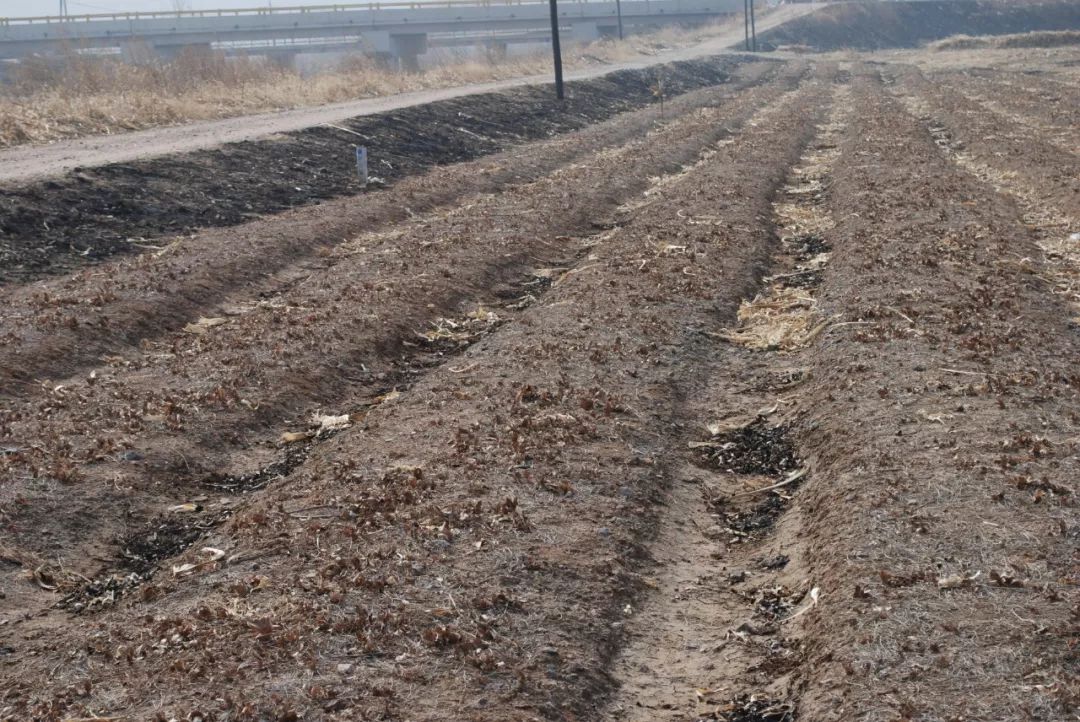
Seedling Bed for Cultivating Cang Zhu in Chengde
Currently, in Chengde, Hebei, the cultivation of Bei Cang Zhu requires at least four years to form a medicinal material product, and initially focuses on collecting seeds, selling seeds for a profit, as seeds can fetch 800-1000 yuan per kilogram, providing high returns per mu. Therefore, the cultivation of Cang Zhu as a product has only just begun in recent years, and it is easy to predict that the future use of Cang Zhu will primarily rely on cultivated sources.
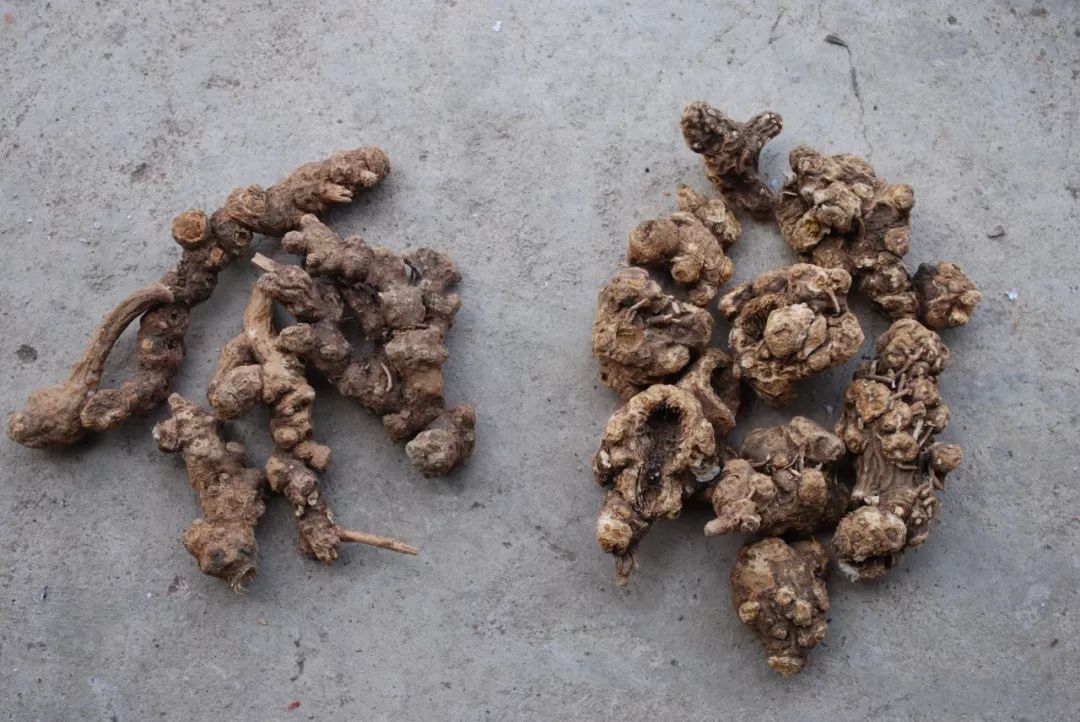
Comparison of Wild Cang Zhu (left) and Cultivated Cang Zhu (right) Medicinal Materials
Thus, Cang Zhu medicinal materials are currently in a transitional phase from wild to cultivated. Wild resources can be somewhat protected, and cultivated Cang Zhu meets the pharmacopoeia content requirements after four years of cultivation, but the cross-section of cultivated Cang Zhu is dense, which does not conform to the pharmacopoeia’s requirement for a loose texture. Companies selling slices still primarily use wild products or mix a certain proportion of cultivated Cang Zhu slices for sale. Only in the raw material extraction enterprises is the gradual use of cultivated sources beginning.
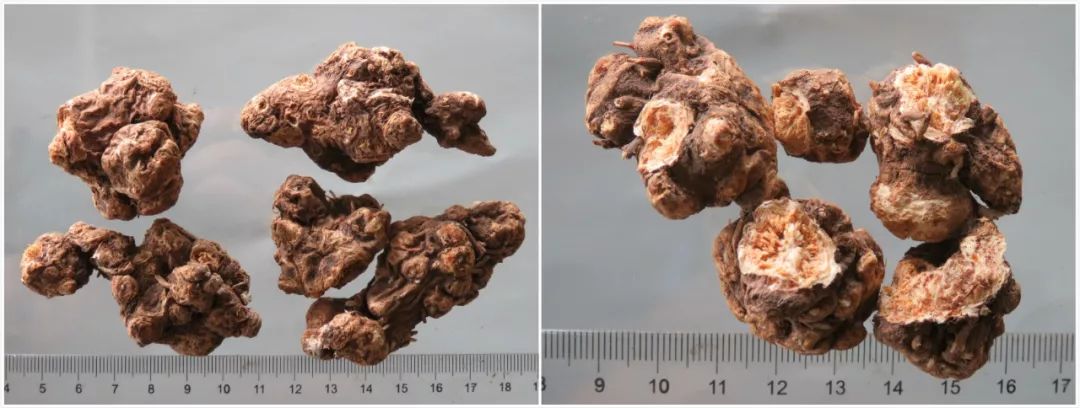
Cultivated Cang Zhu Medicinal Material and Cross-section
Cultivated Cang Zhu has certain differences in appearance compared to wild Cang Zhu. Cultivated Cang Zhu typically appears in clumps, with a dense cross-section and a heavier texture. In contrast, wild products often have a nodular cylindrical shape, with scattered stem remnants on the nodules, and a loose cross-section. This allows for differentiation.
Here, I would like to mention Guan Cang Zhu (A.japonica Koidz.ex Kitam), named for its wild resources primarily distributed in the area north of Shanhaiguan in Heilongjiang. Guan Cang Zhu is not included in the 2015 edition of the Chinese Pharmacopoeia and is only used in a few cities and counties in Northeast China, being a confusing substitute for genuine Cang Zhu. In Korea and Japan, Guan Cang Zhu is used as “Bai Zhu”. According to literature, Guan Cang Zhu has significant differences in chemical composition compared to genuine Mao Cang Zhu and Bei Cang Zhu, and therefore cannot be used as a substitute for Cang Zhu.
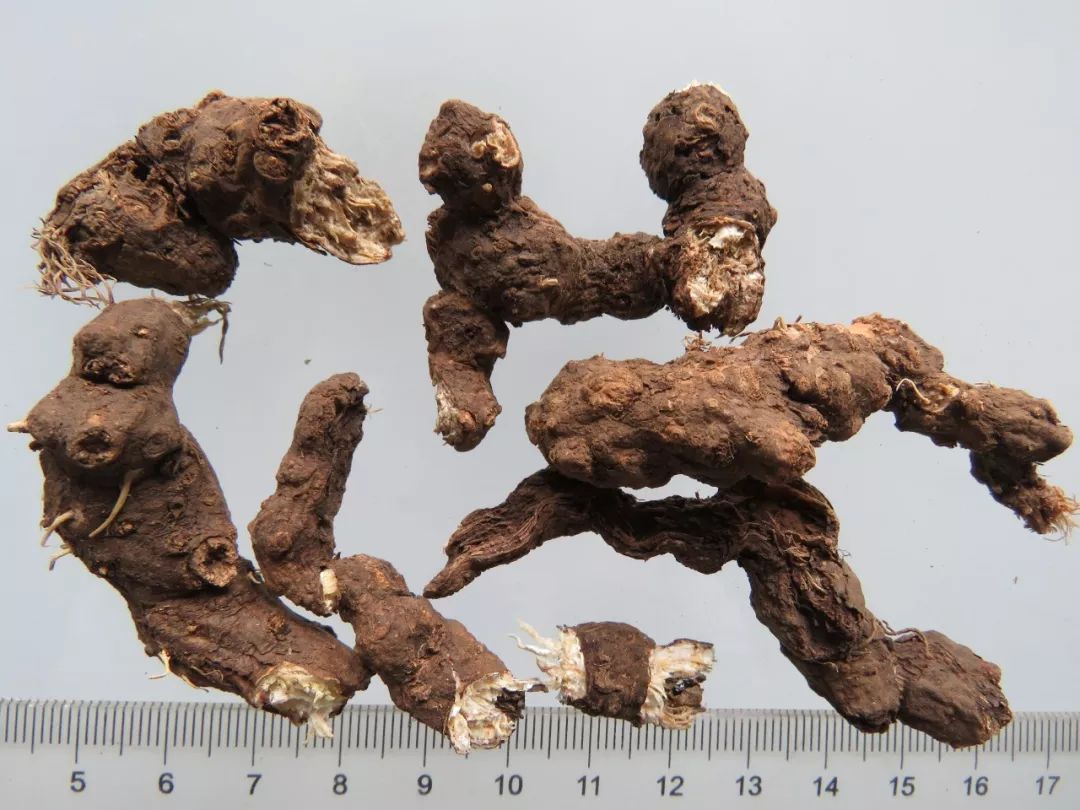
Guan Cang Zhu Medicinal Material (Unprocessed)
During times of high demand for Cang Zhu, there are instances where Guan Cang Zhu is falsely passed off as genuine Cang Zhu. However, Guan Cang Zhu has strong fibrous properties, a loose texture, and a cross-section with few or no oil spots, and a milder flavor. Its wild resources are relatively abundant and priced lower, leading some pharmaceutical companies to take risks by slicing and frying it to mask the color of the cross-section, attempting to pass it off as genuine fried Cang Zhu.
Disclaimer: This article is shared from “Medicinal Plant Illustrated Guide” for the purpose of disseminating basic knowledge about herbs. The copyright belongs to the original author, and any advertisements inserted are unrelated to the original author. We thank the original author for their hard work. If there are any objections, we will delete the content.



